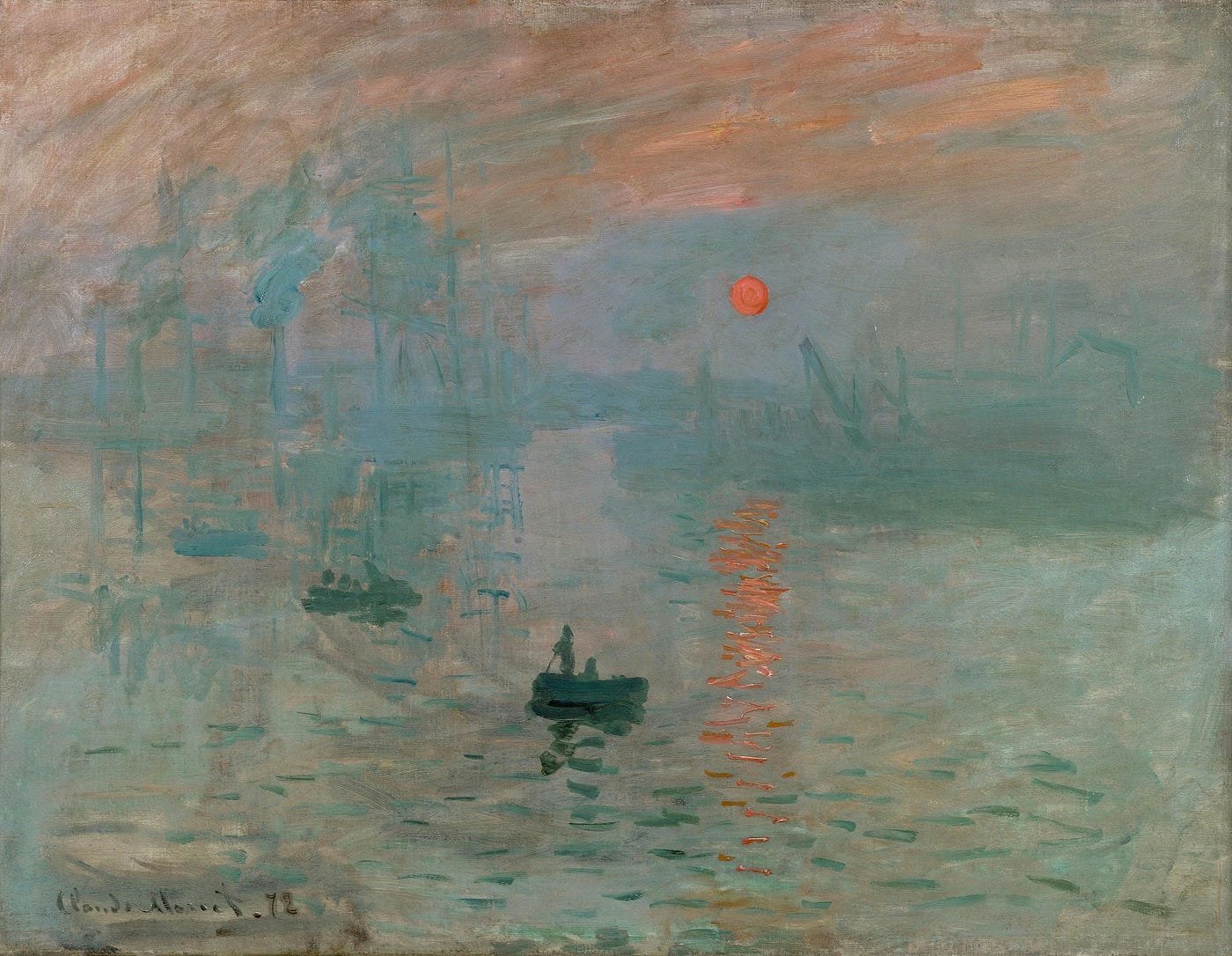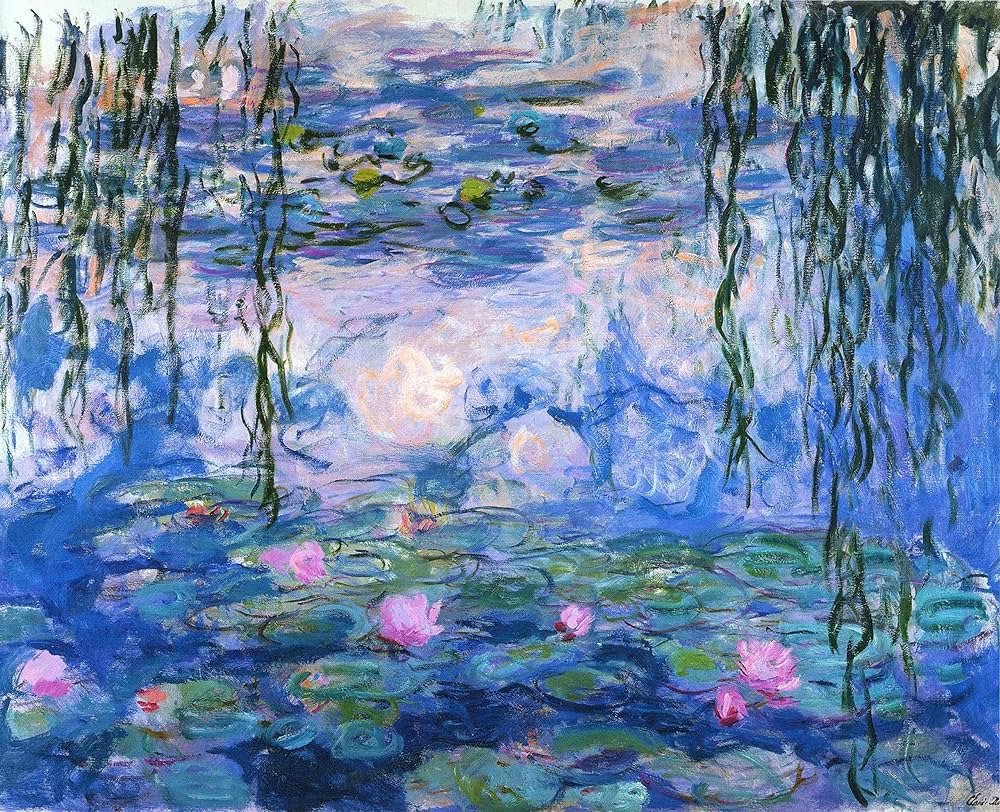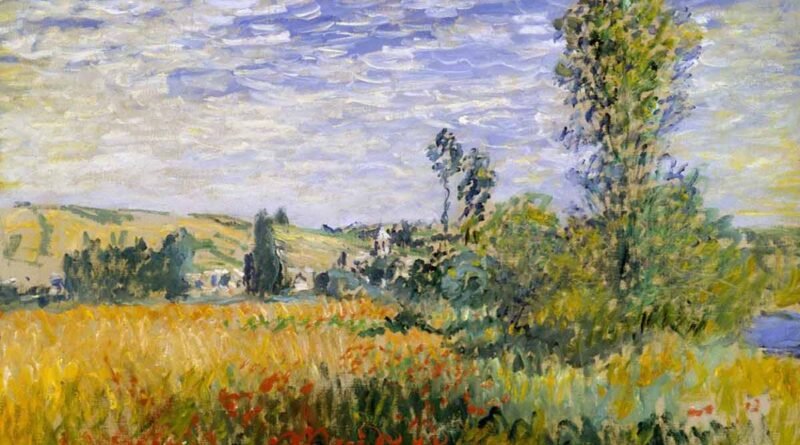6 Brief understanding of Best Impressionism Landscape Painting Revolution
Before we get into the court of Impressionism landscape painting, we need to know a short history of its origin. Impressionism landscape painting was a revolutionary art movement that emerged in the 1800s and was based mostly on Parisian artists.
This movement is also called the initial stages of the modern movement. Impressionists rejected traditional subjects in favor of modernism, wishing to produce works that represented the environment in which they lived.
They were united by a concentration on how light might define a point in time, with color giving definition rather than black lines. Plein air art, or painting outside, was highlighted by the Impressionists.
Impressionism landscape painting , which was once dismissed by critics, has subsequently come to be recognized as among the finest and important art movements in Western history.
Best Impressionism Landscape Painting Revolution
What is Impressionism?
During the late 19th century, Impressionism was a radical departure from traditional art. It was led by Claude Monet and Camille Pissarro, who focused on light, color, and atmosphere instead of intricate detail.
In fact, the term “Impression” is derived from a critic’s snide comment about Monet’s painting “Impression, Sunrise,” which defined the transformative movement as a result.
Its revolutionary approach to color is at the heart of Impressionism landscape painting. Rather than depicting reality, artists applied bold, unmixed colors directly on canvas, letting the viewer’s eyes blend the hues.
This broke with academic painting norms, creating vibrant, emotional works rather than realistic representations.
Additionally, it is known for its unique brushwork. Artists used quick, loose strokes to capture a scene’s essence, not its minute details. The result is a ‘snapshot’ of a moment, full of life and emotion, that invites the viewer to view life in a new way.
The Initial Stages of Impressionism landscape Painting

It was founded in 1874 by Claude Monet and other French painters as the first independent exhibition.
This first show was distinguished by a departure from the Academy’s conventional and stringent standards and procedures for modern artists.
Industrialization was one of the most significant social and political shifts in 18th-century France which had also had an impact on art, artists, and the way they thought.
American John Rand decided not to join their rankings as a great artist, but as a painter working in London, he invented a technology that would change the art world in 1841.
His ingenious new method provided readily portable, pre-mixed paint and allowed painters to take their work outside. The Barbizon school, a group of artists who opposed the Academy of Salons’ traditional and rigorous standards, painted outside and drew influence from nature.
They abandoned the old style of painting, which included religious, historical, mythical, and idealized works, and instead chose a new artwork that was directly influenced by nature.
Secondly, the Realists were a group of artists that abandoned conventional subjects in favor of more romantic ones.
They chose subjects from everyday life to represent in their paintings. Edouard Manet, a realist artist, was a member of the team and is usually described as an Impressionist because he expects to gain momentum on and close ties with the artists of the movement.
Plenty of Manet’s techniques were adopted by the Impressionists, notably his embracing of modernism as a subject and the fluidity of his brushstrokes, as well as his use of color and light. All of these characteristics may be seen in his 1863 picture Le Dejeuner Sur l’Herbe.

In the early 1860s, four young painters, Claude Monet, Pierre-Auguste Renoir, Alfred Sisley, and Frédéric Bazille, gathered and discovered that they had a similar passion for landscape painting, which was antithetical to established style.
They create their unique group of artists, influenced by Gustave Courbet’s Realism and the Barbizon school. Contemporary artists such as Monet, Renoir, Pissarro, Sisley, Cézanne, Berthe Morisot, and Edgar Degas accompanied them.
Nevertheless, due to their departure from precedent and disdain of traditional styles, a substantial number of their works were refused. Seeing a large number of rejected pieces, Napoleon III directed the organization of an exhibition for the public to appraise these works, which became known as the Salon des Refusés (Salon of the Refused).
In 1874, these painters established the Société Anonyme Coopérative des Artistes Peintres, Sculpteurs, Graveurs (“Cooperative and Anonymous Association of Painters, Sculptors, and Engravers”) and displayed them operate autonomously beyond the Salon.
This was widely regarded as the very first Impressionist exhibition, and it drew a large crowd. Some went to laugh at their paintings, while others were astounded by their originality and stunning beauty. Let us now talk about the leaders of the movement.
1. Claude MONET
Monet was a pioneer of the trend, and his quick brush strokes and fractured color placement influenced the work of others. In his depiction of light, he was especially engaged over time. His sequence of artworks of Rouen Cathedral at various seasons of the year and day are strong instances of Monet’s thoughts on how characteristics around a subject may affect it.
Rouen Cathedral: The Facade at Sunset, from 1894, is his best-recognized work in this series. Monet’s Impressionist approach grew during his life, resulting in his many studies of the Waterlily Pond, completed from 1898 to 1926, with the last pieces in the sequence (completed right before his death) achieving a somewhat abstract aspect.
2. Claude Monet painted water lilies
Claude Monet painted water lilies over the final 30 years of his life. His inspiration was a waterlily lake in his Giverny garden. Monet was infatuated with his water lilies and painted them again and over.
He did, though, paint them from various angles, at various times of day, under various lighting, and in various atmospheric and seasonal circumstances.

3. Pierre-Auguste Renoir
Renoir was widely regarded as the other founder of the Impressionist movement. He shared Monet’s interests, but he typically chose to capture artificial light in locations like dance halls and centered his studies of the effects of light on humans, particularly the feminine form, rather than scenery, and he commonly concentrated on portraits.
Renoir’s favorite subject matter was daily life, and his depiction of it is bathed with brightness.
Monet was infatuated with his water lilies and painted them again and over.
He did, though, paint them from various angles, at various times of day, under various lighting, and in various atmospheric and seasonal circumstances.

4. Two Young Girls at the Piano, 1892
Renoir was invited by the French government to create new work for the Musée de Luxembourg, a gallery of living artists, in 1891. He decided to paint Two Young Girls at the Piano with considerable care, producing five variations in all.
In their concentration on a modest home situation, the works demonstrate the impact of 18th-century French genre painting.
The reddish tones of the hair and the bright pinkish of the girl’s frock are an obvious tribute to Titian, Venice’s great coloring.
The copies of the picture housed in the Metropolitan Museum of Art in New York and the Musée d’Orsay in Paris are considered to be the best.
5. Edgar Degas
Degas is sometimes regarded as a member of the Impressionist movement because he did participate with them, most prominently at the 1874 show, although he did not take into account himself a member of it.
He wished to be known as a Realist. His connection with the Impressionists was encouraging, to assist the group in combating the existing quo’s restricted objections.
6. L’Absinthe 1876
One of the most renowned pictures by Edgar Degas depicts the rising social exclusion in Paris during its fast rise.
It portrays a woman looking drearily with an Absinthe glass in front of her. A man who appears to be a drunkard sits next to her.
Degas posed as two absinthe addicts in his favorite Parisian pub, the Café de la Nouvelle-Athènes, with famed actress Ellen Andrée and Bohemian artist Marcellin Desboutin.
The figures in the painting were regarded vulgar and sloppy by English reviewers, and the woman was even mocked as a slut. Some could see the image as a threat to alcohol and, more broadly, the French.
L’Absinthe afterward acquired prominence and impacted the works of numerous artists. It is now famed for its one-of-a-kindness and is regarded as his best work.
Overview
Impressionism landscape painting arose in the mid-nineteenth century as a revolutionary creative style distinguished by a break from traditional studio-bound procedures.
An American artist invented foldable metal tubes for oil paints in 1841, which helped impressionists paint outside with remarkable ease.
This corresponded with the growth of railways, which made countryside more readily available and encouraged artists to work outdoors.
The famous image of impressionist painters is of them working en plein air, with hats over their eyes and easels set up along riverbanks to capture transitory effects of light and ambiance.
Open-air painting had become a tradition by the mid-century, while painters frequently distinguished between outside oil sketches and final studio works.
Impressionists prioritized observation and spontaneity over mythical or allegorical interpretations as a result of the realism movement’s emphasis on a more direct, unembellished depiction of nature.
Landscape artists such as Corot and Boudin, who painted directly from nature, influenced the impressionistic artists such as Pissarro, Sisley, Monet, and Renoir, who adopted open-air painting as a cornerstone of their artistic practice.
Monet famously declared the Seine and its surroundings to be his studio, emphasizing the need of direct observation, quickness, and spontaneity in capturing the ever-changing elements of weather, seasons, and times of day.
While the idea of fully outdoor work survives, many impressionist works combine studio polish with plein air immediacy, demonstrating the movement’s commitment to portraying the essence of nature.


